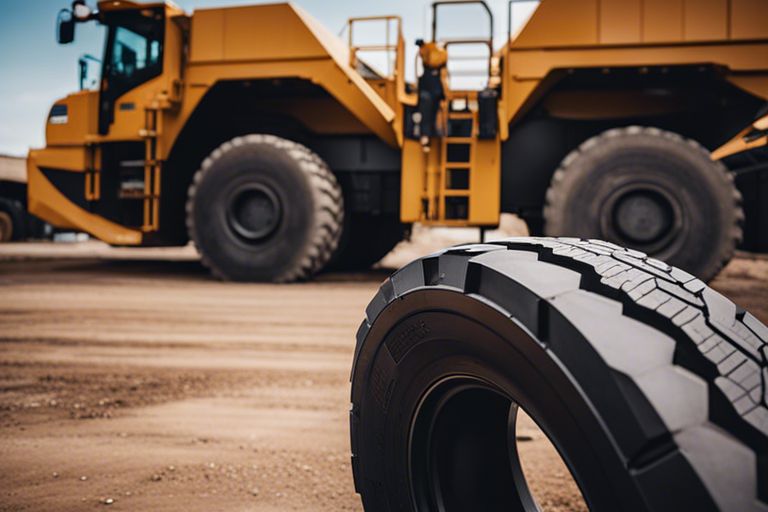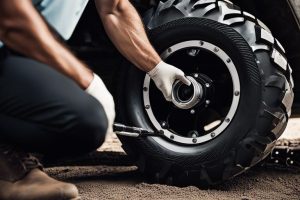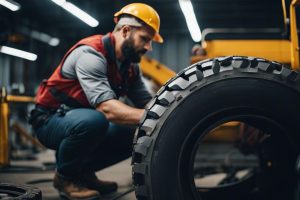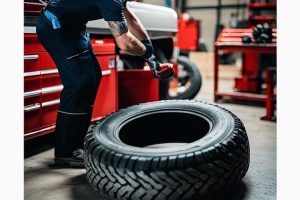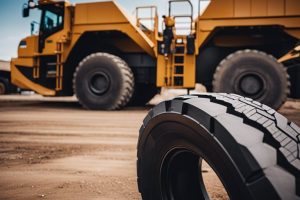Obtaining optimal performance and longevity from your off-the-road (OTR) tires is crucial for heavy equipment operation. Properly rotating your OTR tires can significantly extend their lifespan and enhance their performance. In this comprehensive guide, we will walk you through the step-by-step process of rotating your OTR tires to maximize their durability and ensure safe operation. Don’t let uneven wear and potential dangers on the job site reduce the efficiency of your equipment. Follow these instructions to keep your OTR tires in optimum condition.
Key Takeaways:
- Regular rotation is vital: Rotating OTR tires is crucial for even wear and optimal performance. It helps extend the lifespan of your tires and ensures consistent performance across all tires.
- Follow manufacturer guidelines: It is important to follow the recommended rotation patterns provided by the tire manufacturer. This will help maintain the warranty on your tires and avoid any potential issues due to improper rotation.
- Consult a professional: If you are unsure about how to rotate your OTR tires or need assistance, it is best to consult a professional. They can provide guidance on the best rotation schedule and techniques for your specific tires.
Understanding OTR Tires
Clearly, off-the-road (OTR) tires are specifically designed for heavy-duty vehicles that operate in rugged terrains such as construction sites, mines, and quarries. These tires are constructed with reinforced materials to withstand harsh conditions and provide optimal traction and stability.
Key Characteristics of OTR Tires
For OTR tires, key characteristics include deep tread depth, cut-resistant compounds, and strong sidewalls. The deep tread depth enhances traction on challenging surfaces, while the cut-resistant compounds prevent punctures and damages commonly encountered in off-road environments. Additionally, the strong sidewalls help OTR tires withstand heavy loads and rough terrains, ensuring durability and longevity.
Signs Your OTR Tires Need Rotation
Your OTR tires may need rotation if you notice uneven tread wear, reduced traction, or increased vibration while driving. Uneven tread wear is a common indication that the tires are not wearing evenly, potentially affecting vehicle performance and safety. Reduced traction can compromise your vehicle’s ability to grip the ground properly, especially in slippery conditions. Increased vibration could be a sign of misaligned or unbalanced tires, impacting ride comfort and stability.
This emphasizes the importance of regular tire rotations to maintain proper tread wear patterns and ensure optimal performance and longevity of your OTR tires. By identifying these signs early and addressing them promptly, you can maximize the efficiency and safety of your heavy-duty vehicles operating in demanding off-road environments.
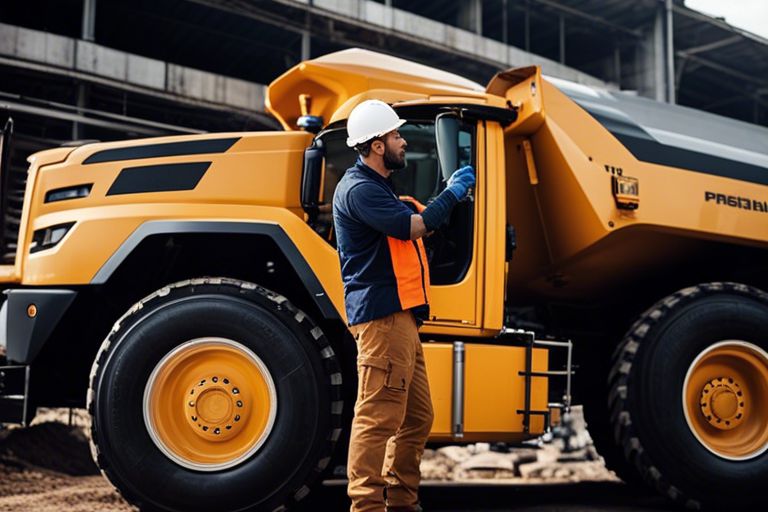
Preparing for Tire Rotation
Obviously, before you jump into rotating your OTR tires, there are some aspects to consider to ensure a smooth and efficient process.
Tools and Equipment Needed
With proper tools and equipment in hand, you can successfully rotate your OTR tires. Make sure you have a tire iron, jack stand, lug wrench, and a tire pressure gauge on standby. These tools will make the rotation process much easier and quicker.
Additionally, having a marker to label the tires can help you keep track of their positions, ensuring you rotate them correctly. A torque wrench is important for tightening the lug nuts to the manufacturer’s specifications, preventing any loose fittings that could lead to accidents.
Safety Tips Before You Begin
Before starting the tire rotation process, ensure your vehicle is parked on a flat, stable surface to prevent any accidents. Chock the wheels to ensure the vehicle does not move while you are working on it. Loosen the lug nuts on the tires before jacking up the vehicle to make it easier to remove them once the tire is off the ground.
- Check the owner’s manual for specific instructions on jack placement and lifting points
- Use jack stands to provide additional support
- After completing the rotation, double-check the tightness of the lug nuts
Before rotating your OTR tires, it’s also important to wear protective gear such as gloves and goggles to shield yourself from any potential hazards. Always follow safety protocols to avoid any accidents or injuries during the rotation process. Keep in mind, safety should always be the top priority when working on any vehicle maintenance tasks.
The How-To of Tire Rotation
All vehicle owners know the importance of regular tire rotations to ensure optimal performance and longevity of their tires. Properly rotating your off-the-road (OTR) tires is crucial in maintaining even tread wear and maximizing tire life. In this chapter, we will examine into the step-by-step process for rotating OTR tires to help you achieve the best results.
Step-by-Step Process for Rotating OTR Tires
Front Axle and Rear Axle are the main areas that need attention when rotating OTR tires. Following a specific pattern when rotating your tires is crucial to promote even tread wear and ensure optimal performance.
| Front Axle | Rear Axle |
| 1. Remove front tires and switch sides. | 1. Remove rear tires and switch sides. |
| 2. Inspect for any damage or unusual wear patterns. | 2. Inspect for any damage or unusual wear patterns. |
Factors Influencing Tire Rotation Patterns
Tire Size and Vehicle Type are significant factors that influence the tire rotation patterns. Depending on the size of your tires and the type of vehicle you own, the rotation pattern may vary to suit these specific factors.
- Tire Size: Larger tires may require a different rotation pattern compared to smaller tires.
- Vehicle Type: Heavy-duty vehicles may need a more frequent rotation schedule than light-duty vehicles to ensure uniform wear.
Influencing tire rotation patterns is crucial to maintaining the performance and longevity of your OTR tires. Proper alignment, inflation pressure, and road conditions also play a significant role in determining the frequency and type of rotations required for your tires. Regular inspections and adherence to manufacturer guidelines can help you make informed decisions regarding the rotation of your OTR tires. Any deviations from recommended rotation patterns should be addressed promptly to avoid premature wear or damage.
- Alignment: Ensuring proper alignment can help maintain even wear on your tires.
- Inflation Pressure: Maintaining correct tire pressure is crucial for uniform tread wear and overall tire performance.
Plus, understanding the factors that influence tire rotation patterns will empower you to make informed decisions regarding the maintenance of your OTR tires. By taking the time to follow a proper rotation schedule and addressing any issues promptly, you can maximize the performance and durability of your tires, ultimately saving you time and money in the long run. Any neglect in tire rotation can lead to uneven wear, reduced traction, and potential safety hazards on the road.
Maintaining Your Rotated Tires
After rotating your OTR tires, it is crucial to maintain them properly to ensure optimal performance and longevity. Regular inspections and adjustments, along with following best practices, will help you get the most out of your investment.
Post-Rotation Inspections and Adjustments
Maintaining your rotated tires involves conducting post-rotation inspections and adjustments. Check the tire pressure regularly to ensure it is within the manufacturer’s recommended range. Inspect the tires for any signs of uneven wear, cuts, punctures, or other damage that may impact performance. Additionally, make sure the lug nuts are properly tightened to the recommended torque specifications.
Best Practices for Prolonged Tire Durability
The best practices for prolonged tire durability include maintaining proper inflation pressure, regular tire rotations, and alignments. Keeping your tires properly inflated not only extends their lifespan but also improves fuel efficiency and overall vehicle performance. Rotating your tires at regular intervals promotes even wear and extends tread life. Aligning your vehicle’s wheels ensures that the tires wear evenly and helps prevent premature tire damage.
The key to maximizing the durability of your OTR tires lies in following these best practices consistently. By staying proactive and addressing any issues promptly, you can significantly extend the life of your tires and maximize your investment.
Any negligence in maintaining your rotated tires can lead to premature wear, decreased performance, and even safety hazards on the road. Regularly inspecting your tires and following best practices will not only save you money in the long run but also ensure a smoother and safer driving experience.
Advanced Tips and Troubleshooting
Keep these advanced tips and troubleshooting techniques in mind to ensure the best results when rotating your OTR tires:
- Inspect tires thoroughly before rotation to identify any damage or abnormalities.
- Double-check the recommended rotation pattern for your specific tire type.
- Consider adjusting inflation pressures based on load and application for optimal performance.
- Monitor tire wear patterns regularly to catch any issues early on.
Addressing Common Rotation Challenges
Addressing common rotation challenges is vital to maintaining the integrity of your OTR tires. One of the most common challenges is determining the correct rotation pattern based on your vehicle and tire type. If unsure, consult the tire manufacturer’s recommendations or seek professional advice. Additionally, issues like uneven wear can arise if rotations are not done regularly or if there are underlying problems with alignment or suspension components.
Regular maintenance and timely rotations can help address these challenges before they worsen and lead to premature tire wear or failure. Keep a detailed log of your rotations and any irregular wear patterns to track and address any recurring issues.
How to Diagnose and Resolve Uneven Tire Wear
One of the key indicators of potential issues with your OTR tires is uneven tire wear. This can be caused by a variety of factors, including improper inflation, misalignment, or even overloading. To diagnose and resolve uneven tire wear, start by inspecting the tires for signs of wear patterns. If you notice uneven wear, check the inflation levels, alignment, and suspension components to identify and address the root cause.
Regularly rotating your tires can also help prevent uneven wear by promoting more even distribution of the load and wear across all tires. If you continue to experience uneven wear despite regular rotations, consider consulting a professional technician for a thorough inspection and alignment check.
Plus, remember to always prioritize safety when diagnosing and resolving any tire wear issues. Uneven wear can affect the handling and performance of your vehicle, leading to potential safety hazards on the road. Addressing these issues promptly will not only extend the life of your tires but also ensure a safer driving experience for you and your passengers.
1. Lift vehicle securely using jack stand to access tires.
2. Remove lug nuts and take off tires for rotation.
3. Inspect tires for wear and damage while off.
4. Cross rotate front and back tires for even wear.
5. Tighten lug nuts to recommended torque specifications.
6. Lower vehicle and re-torque lug nuts in a star pattern.
Final Words
So, by following the steps outlined in this complete guide on how-to rotate OTR tires, you can significantly improve the performance and durability of your tires. Regular rotation helps ensure even wear, extends the lifespan of your tires, and maximizes their overall performance. For more information on tire maintenance, check out How To Properly Rotate Tires: A Guide For Beginners. Keep your OTR tires in top condition by incorporating tire rotation into your regular maintenance routine.
FAQ
Q: Why is it important to rotate OTR tires?
A: Rotating OTR (Off-The-Road) tires is necessary to maximize their performance and durability. By rotating the tires, you ensure even wear across all tires, extending their lifespan and improving overall traction and stability on rough terrains.
Q: How often should OTR tires be rotated?
A: It is recommended to rotate OTR tires every 500 hours of use or at least once a year, whichever comes first. Regular rotation helps prevent uneven wear patterns, prolonging the life of the tires and enhancing their performance in demanding off-road conditions.
Q: What is the proper rotation pattern for OTR tires?
A: The most common rotation pattern for OTR tires is the cross pattern, where the front tires are moved diagonally to the opposite rear position (e.g., front left tire to rear right position). This pattern ensures that all tires wear evenly and maintain consistent traction levels for optimal performance.
